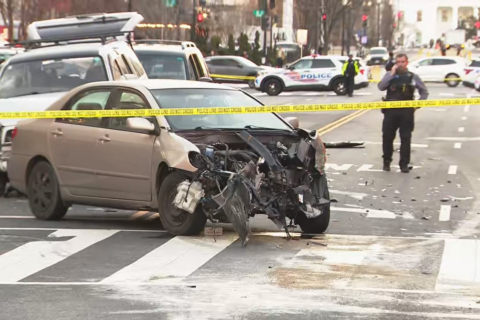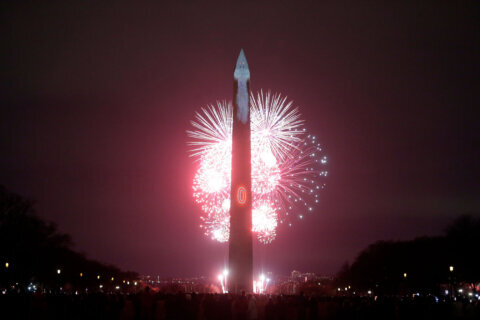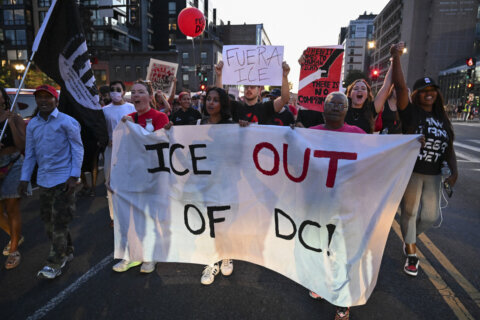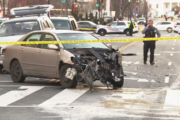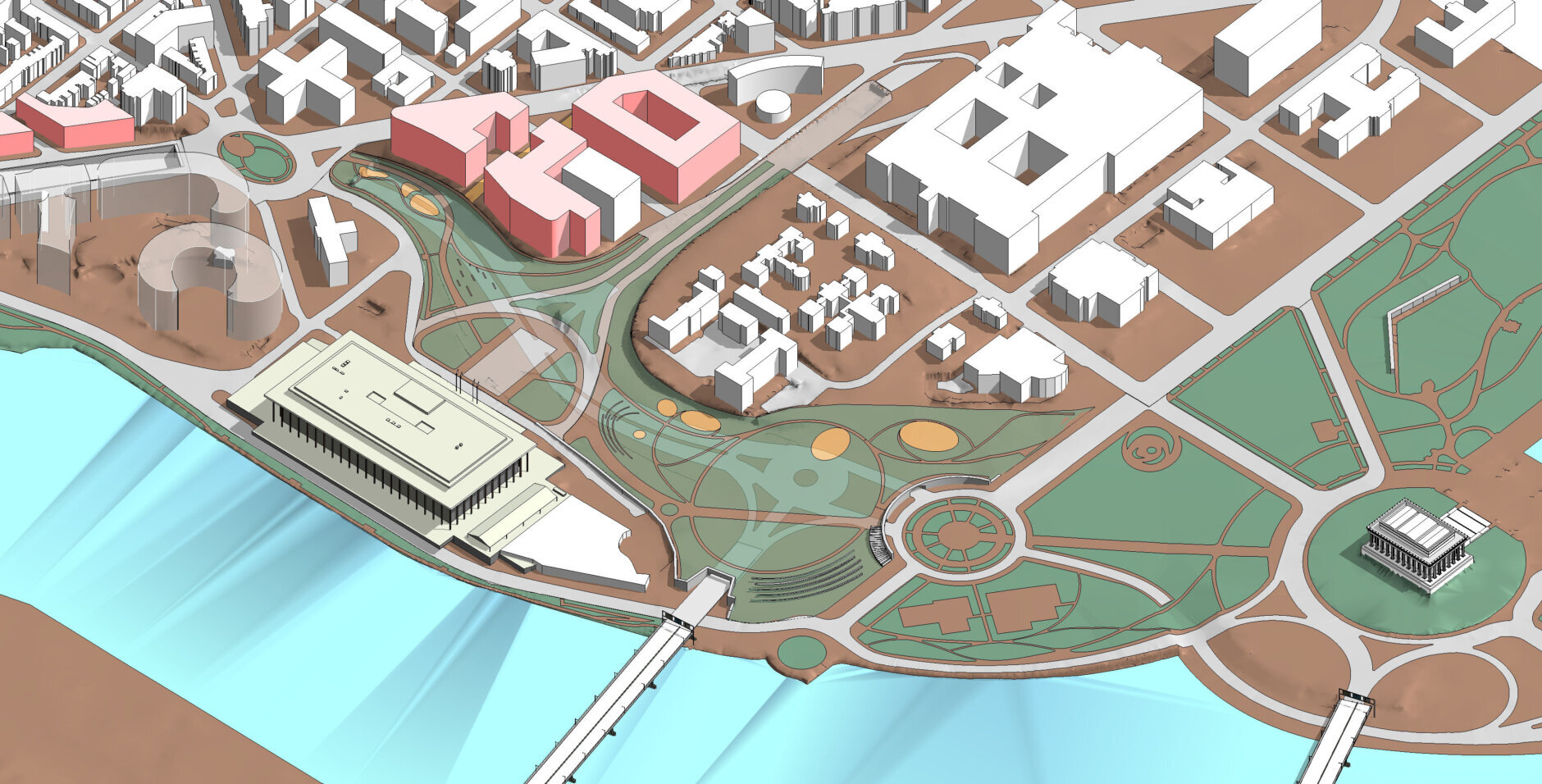
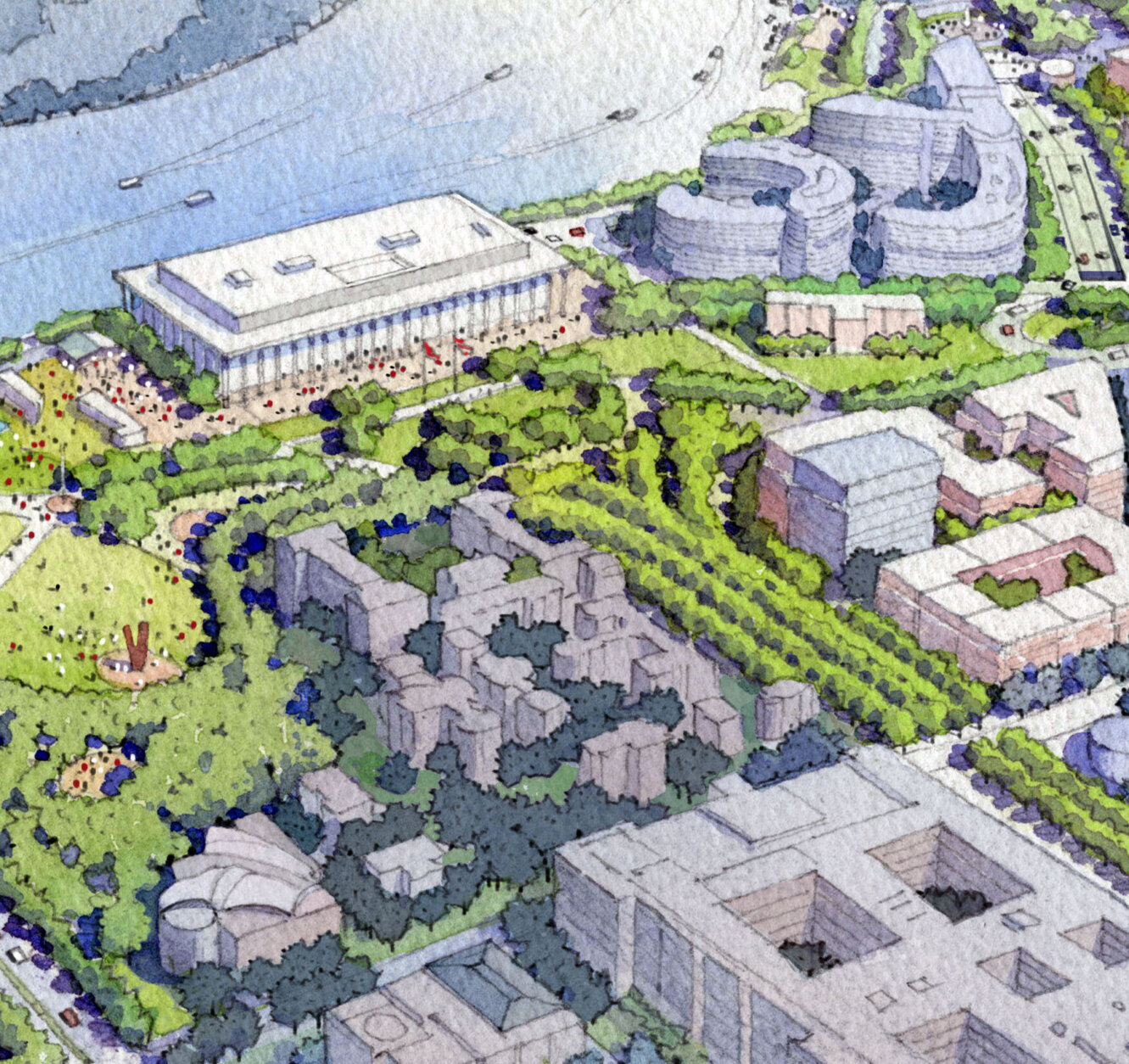
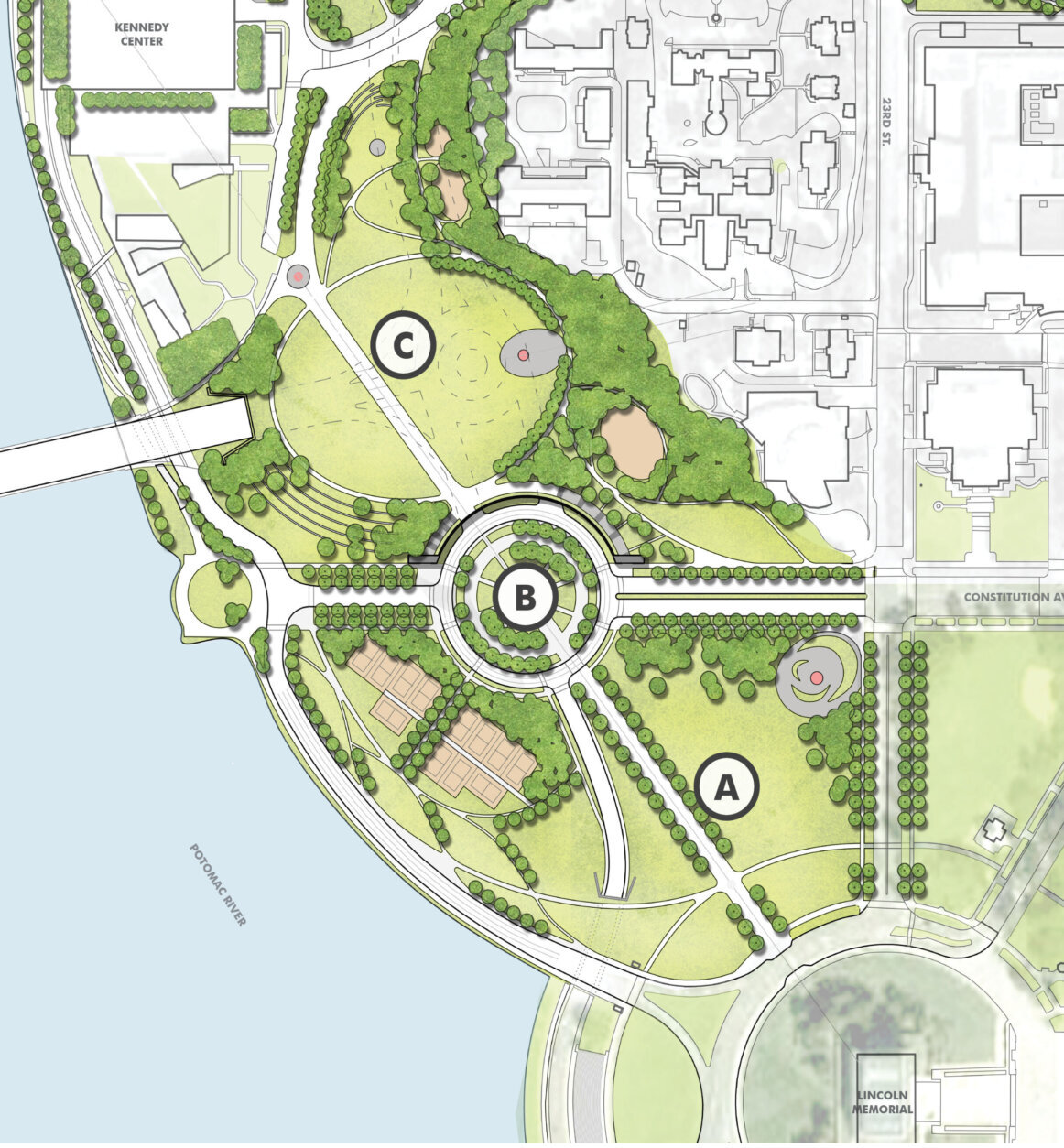
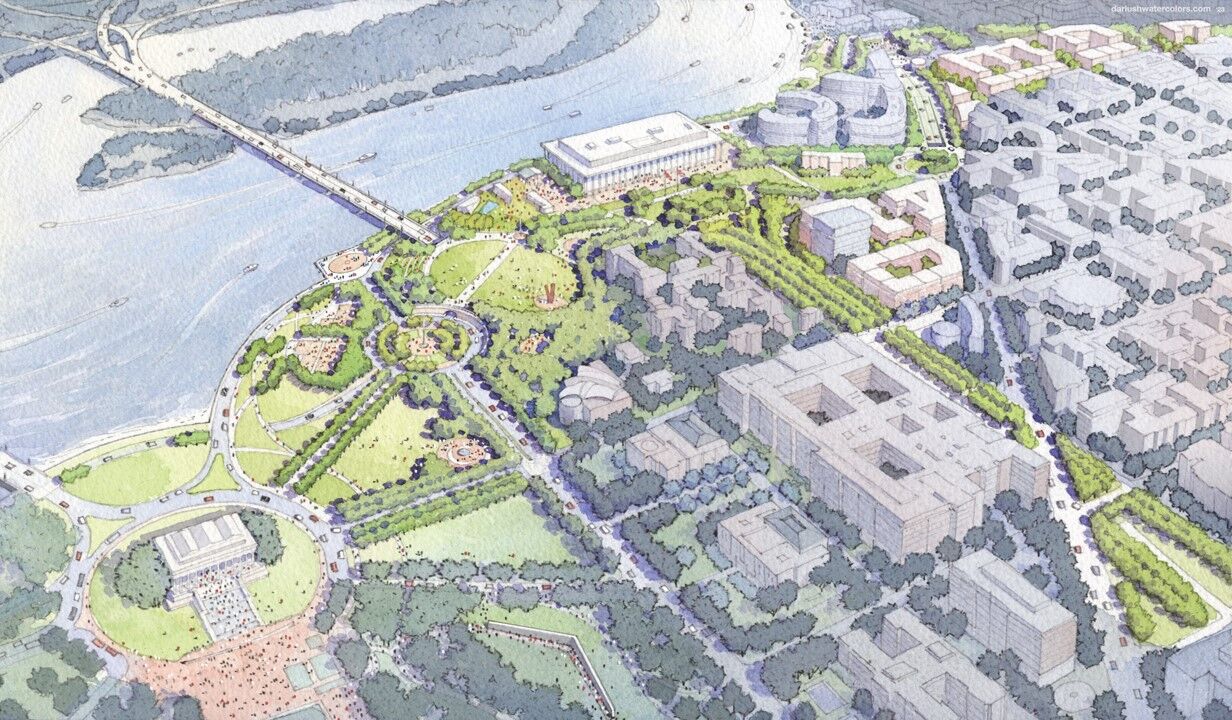
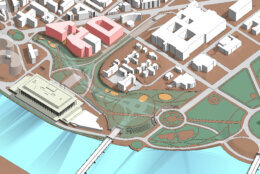
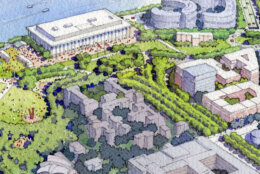
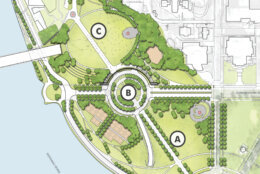
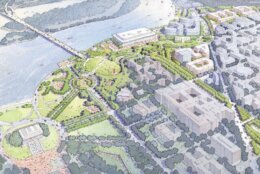
The National Mall could be growing by over 20 acres, if the urban design concept from the National Capital Planning Commission is implemented.
“Among a lot of things we do is long-range planning for areas in the District,” said Matthew Flis, senior urban designer with the National Capital Planning Commission. “The urban design concept, which looks at the Foggy Bottom area from the National Mall to K Street, really comes out of previous NCPC planning work.”
The Monumental Core Framework Plan was prepared by the NCPC in 2009 in coordination with the Commission of Fine Arts. That plan identified areas in the District that have potential but also challenges, like connectivity and accessibility.
“One of those areas was the Northwest Rectangle — the portion of Foggy Bottom that extends to the riverfront and from the National Mall up towards K Street Northwest,” Flis said.
While the Kennedy Center is in this area, Flis told WTOP that this plan is more about connecting the National Mall to the Waterfront.
One thing standing in the way is the Potomac River Freeway.
“It creates a lot of challenges for both residents and visitors to the memorials and monuments,” Flis said. “This is an urban design concept, an idea how we could address some of those challenges today.”
The plan would have the bridge decked over. Flis compared it to the $1.3 billion Capitol Crossing project, which transformed seven acres located largely right over Interstate 395 into a three-block, 2.2 million-square-foot complex of five buildings with office spaces, housing and retail.
“Using that deck, you create new, open space by covering over the existing freeway,” Flis said. “So you are not losing the pattern of traffic movement that already exists.”
Flis told WTOP that one of the main goals is to create a space that would house engaging activities for visitors and residents, like new bicycle and pedestrian connections.
“As it stands today, it’s really difficult to get from the National Mall to Foggy Bottom, which includes the Kennedy Center,” Flis said.
While this is not happening any time soon, thinking about all the different things that could be done with a National Mall that is more than 20 acres bigger can spark one’s imagination.
“There is always an interest for new memorials and museums,” Flis said. “This could be a location for them.”
Get breaking news and daily headlines delivered to your email inbox by signing up here.
© 2024 WTOP. All Rights Reserved. This website is not intended for users located within the European Economic Area.


